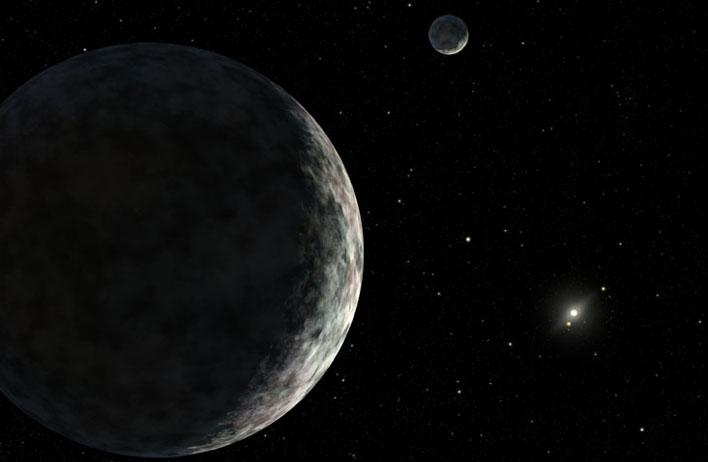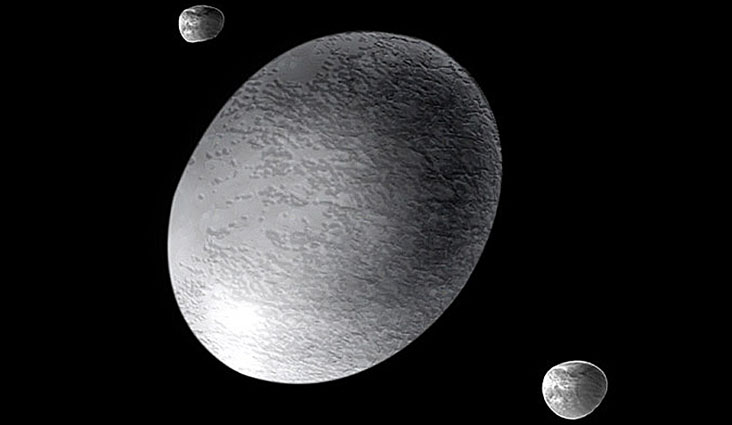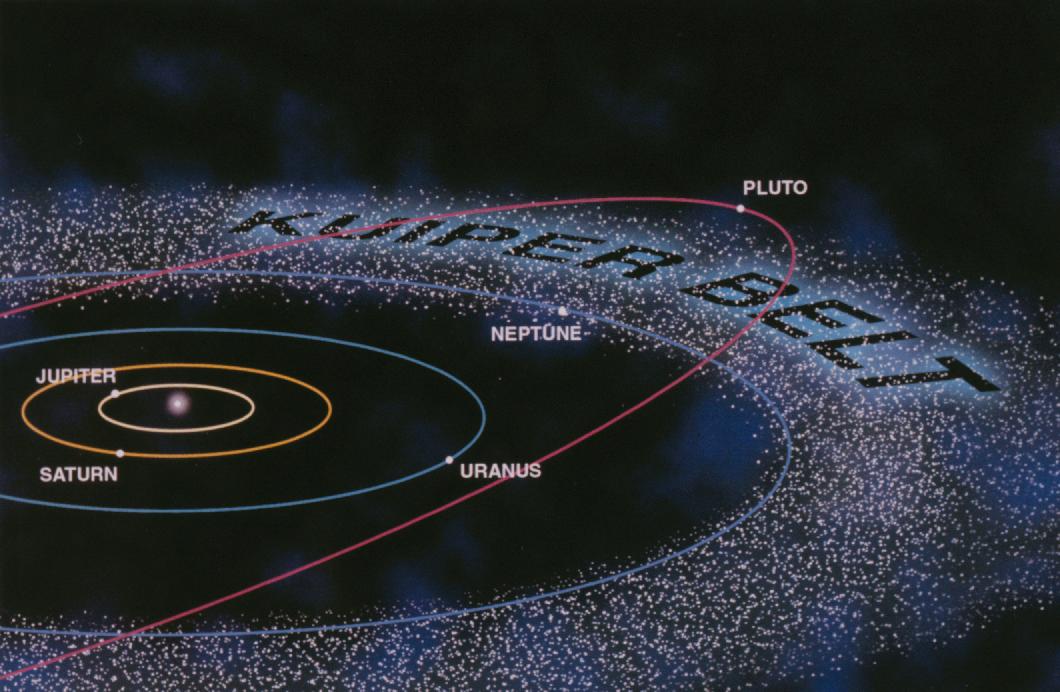Introduction
The Kuiper Belt is a region of icy rocks, called Kuiper Belt Objects (KBOs), that orbit just beyond the orbit of Neptune. There are several dwarf planets in the Kuiper Belt, such as Pluto, Eris, Haumea, and Makemake. Dwarf planets are very similar to regular planets in that they have enough mass to be spherical and have their own satellites, but they cannot clear the area around them of asteroids or KBOs.

Pluto
Pluto is a small dwarf planet that is icy when away from the sun and forms a thin atmosphere when closer to the sun. Pluto’s largest moon is Charon, which is about half of its size. It orbits so close to Pluto that it would appear six times larger than our moon does from Earth. Pluto has four other moons: Nix, Hydra, Kerberos, and Styx.

Eris
Eris is similar to the size of Pluto and has one moon named Dysnomia. Because of Eris’s discovery, a debate began about the definition of a planet.

Haumea
Haumea is one of the fastest rotating objects in the Solar System, completing a full rotation every four hours. Because of its fast rotation, it has an elongated shape. It also has two moons, Hi’aka and Namaka.

Makemake
Makemake is smaller than Pluto and seems to react in some way with the Sun to give it a reddish-brownish color.

Orbits
The orbits in the Kuiper Belt are irregular and unique. Also, since the Kuiper Belt is so far from the Sun, it takes hundreds of years to orbit the Sun. For instance, Pluto takes 248 Earth years, Eris takes 580 Earth years, Haumea takes 310 Earth years, and Makemake takes 285 Earth years.
